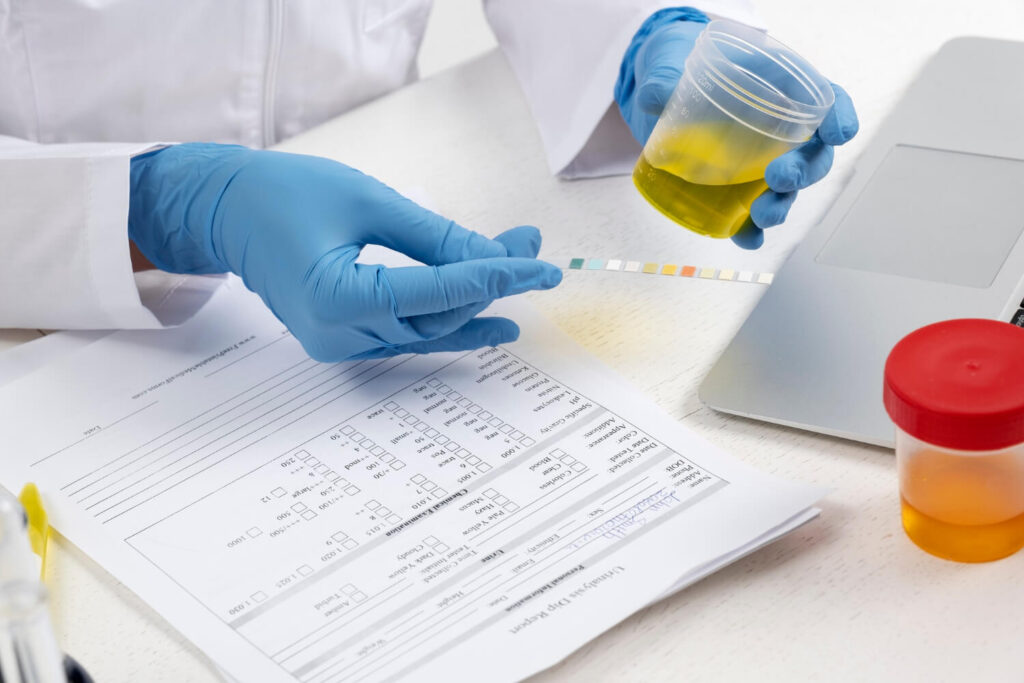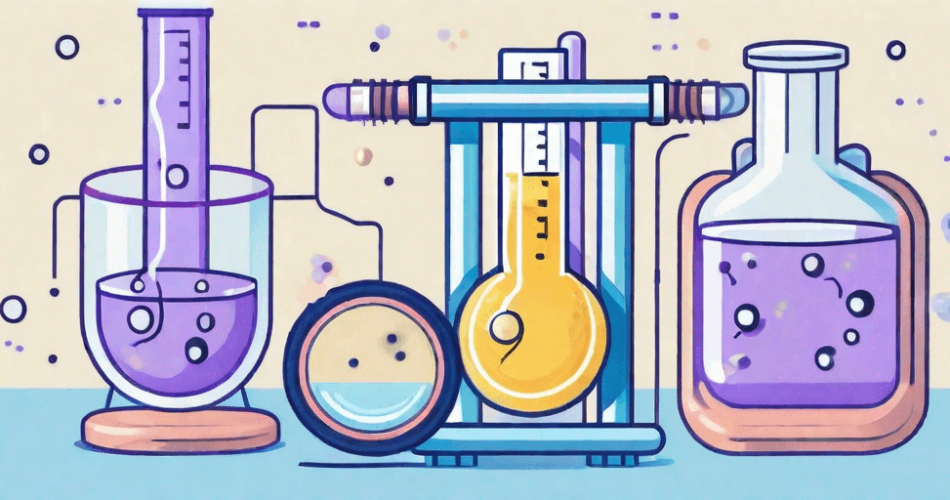When it comes to discovering possible infection in the urinary system, a urine test for uti is important. It is one of the main procedures required by the health professionals when patients visit for a check up. Discover its role during diagnosis period and possible treatment planning in this blog. Let’s begin!
Understanding Urinary Tract Infection (UTI)

This infection occurs in any part of the urinary system, which includes the kidneys, bladder, ureters, and urethra. The urinary system plays a crucial role in removing waste products from the body and maintaining the body’s fluid balance. When bacteria, viruses, or fungi enter the urinary system, they can cause an infection, leading to a UTI.
While both men and women can develop this illness, it is more common in women due to their shorter urethra. This anatomy setup allows bacteria to reach the bladder more easily. The close proximity of the urethra to the anus in women also increases the risk of bacterial contamination.
Although, UTIs can also result in uncomfortable symptoms and potentially serious complications if left untreated. It is important to seek medical attention if you suspect a UTI. If left untreated, it can lead to a more severe condition known as pyelonephritis.
What is a Urine Test for UTI

A urine test for uti is a commonly used diagnostic tool that helps healthcare professionals confirm the presence of an infection. This non-invasive test provides valuable information about the health of the urinary system. In short, it plays a critical role in the accurate diagnosis of UTI.
It is important to identify the underlying cause of the UTI to ensure effective treatment and prevention of recurrent infections. Your healthcare provider may recommend further tests or investigations to determine the specific cause and provide appropriate treatment. Urine test for uti verification is one of the best option to use.
Urine tests involve the analysis of a urine sample to detect the presence of various substances, including bacteria, red and white blood cells, and chemical compounds. These tests provide valuable insights into the overall health of the urinary system. Plus, it and can help identify the presence of infections.
The Science Behind Urine Tests
When it comes to urine tests, there is a fascinating world of science at play. The analysis of urine samples goes beyond a simple visual inspection. It delves into the intricate details of the composition of urine. This allows healthcare professionals to gather crucial information about a person’s health.
This process involves the examination of physical, chemical, and microscopic properties of urine samples. Let’s discuss each of them!
Physical
The physical examination assesses the color, clarity, and odor of the urine. A clear and pale yellow color is generally considered normal. Meanwhile, a darker color may indicate dehydration or the presence of certain substances.
Chemical
The chemical examination of urine determines the levels of various substances, such as glucose, protein, and nitrites. Glucose, for example, can be an indicator of diabetes if found in high levels. Protein levels can provide insights into kidney function, as elevated levels may suggest kidney damage. Nitrites, on the other hand, can be a sign of a bacterial infection in the urinary tract.
Microscopic
Lastly, the microscopic analysis is another crucial aspect of urinalysis. It involves the identification of cellular components present in the urine sample. By examining the urine under a microscope, healthcare professionals can detect the presence of bacteria, white blood cells, and other abnormal cells. Elevated levels of white blood cells, bacteria, or nitrites in the urine may indicate the presence of a UTI.
Interpreting urine test results requires expertise and an understanding of normal and abnormal values. Healthcare professionals meticulously analyze the data obtained from urine tests to make accurate diagnoses and determine appropriate treatment plans.
The Diagnostic Role of A Urine Test for UTI

When a patient presents with symptoms of uti, healthcare professionals often turn to urine tests to confirm the presence of a UTI. These tests involve analyzing a urine sample for the presence of bacteria, white blood cells, and other indicators of infection.
Accuracy and reliability are crucial when it comes to this procedure. When performed correctly and interpreted by skilled professionals, the test can have a high level of accuracy. However, it is important to note that false-positive or false-negative results can occur. False positives may happen due to contamination during the collection process or the presence of other non-pathogenic bacteria in the urine. False negatives can occur if the urine sample is not collected properly or if the infection is caused by bacteria that do not grow well in standard laboratory conditions.
Therefore, in cases where the symptoms strongly suggest a UTI but the initial urine test results are negative, further testing may be necessary. This can include a repeat urine test, a urine culture to identify the specific bacteria causing the infection. Thus allowing experts to evaluate the urinary tract for any structural abnormalities that may contribute to the development of the condition.
The Importance of Early Detection
When a UTI is left untreated, the bacteria can ascend from the urethra to the bladder and potentially reach the kidneys. This can result in a kidney infection. Kidney infections can cause symptoms such as high fever, back or flank pain, nausea, and vomiting. In severe cases, they can lead to kidney damage or sepsis, a life-threatening condition.
Urine tests are an essential tool in diagnosing UTI. Their accuracy and reliability, when performed correctly and interpreted by skilled professionals, make them a valuable diagnostic method. Early detection through these tests allows for timely intervention, preventing the progression of UTIs and reducing the risk of complications.
The Procedure of a Urine Test for UTIs

Undergoing a urine test for a suspected urinary tract infection (UTI) is a straightforward procedure that typically involves the following steps:
Preparing for Your Urine Test
Prior to the test, it is important to follow any specific instructions provided by your healthcare provider. These instructions may include avoiding certain medications that could interfere with the test results or dietary restrictions that could affect the composition of your urine. By adhering to these instructions, you can ensure the accuracy of the test and obtain reliable results.
In addition to medication and dietary considerations, it is also important to clean the genital area thoroughly before collecting the urine sample. This step is crucial in minimizing the risk of contamination, as any bacteria or other substances present on the skin could potentially affect the test results. By using a gentle, unscented soap and warm water, you can effectively cleanse the area and create an optimal environment for the collection of a clean urine sample.
What to Expect During the Test
Once you have prepared for the urine test, you will be provided with a clean container to collect a midstream urine sample. The midstream urine sample is obtained by first urinating a small amount into the toilet and then collecting the subsequent portion of urine in the container. This technique helps to minimize any contaminants that may be present in the initial urine stream, providing a more accurate representation of the urine composition.
During the collection process, it is important to avoid touching the inside of the container or contaminating the sample with toilet paper or other materials. This can be achieved by carefully holding the container in a way that prevents contact with any external surfaces. It is also advisable to avoid unnecessary movements or distractions during the collection process, as this can increase the risk of accidental contamination.
Once the urine sample is collected, it will be carefully sealed and sent to a laboratory for analysis. In the laboratory, trained technicians will perform various tests to examine the urine for the presence of bacteria, white blood cells, red blood cells, and other substances that may indicate a urinary tract infection. The results of these tests will help your healthcare provider make an accurate diagnosis and determine the most appropriate course of treatment.
Other Diagnostic Methods for UTIs
In addition to urine tests, other diagnostic methods may be used to further evaluate UTIs and identify any underlying causes or complications.
Imaging Tests and UTIs
Imaging tests, such as ultrasound or computed tomography (CT) scan, may be used to visualize the urinary tract and identify any abnormalities, such as kidney stones or structural abnormalities that may contribute to UTIs.
Cystoscopy and UTIs
Cystoscopy is a procedure that involves the insertion of a thin tube with a camera into the urethra and bladder. It allows healthcare professionals to visualize the interior of the urinary tract and may be used to investigate recurrent or complicated UTIs.
All of these procedures are founded to ensure the health of every patient with possible uti and other urology related conditions. To find the suitable procedure for your condition, it is best to immediately communicate with your doctor via online or face-to-face. Doing so allows open communication, especially if there are questions that need to be addressed,
Final Takeaway
When it comes to urine test for UTI, patients should note that it is an essential diagnostic tool for identifying and confirming the presence of infections in their urinary tract. It provides valuable information about the overall health of their urinary system. Thus, ensuring the urgency of whether or not treatment plans are needed for their health.
If you suspect you may have a UTI, consulting with a healthcare professional and undergoing a urine test can help guide appropriate treatment and promote optimal urinary health. Book an online consultation with a urologist today!



